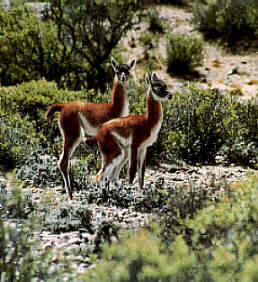


Reading the chronicle The Voyage of the
Beagle a century and a half after naturalist Charles Darwin
made his journey with Captain Robert Fitz Roy, one is struck by
the descriptions of Patagonia still visible
today. "The plains of Patagonia are boundless, for they are scarcely
passable, and hence unknown: they bear the stamp of having lasted,
as they are now, for ages, and there appears no limit to their
duration through future time."
Darwin remained intrigued by the steppe upon his return to England:
"Why then, and the case is not peculiar to myself, have these arid
wastes taken so firm a hold on my memory?" The stereotypical vision
of the Patagonian steppe as a vast lifeless expanse of windswept
desert belies the richness of this peculiar ecosystem for as Darwin
knew, it is the product of extraordinary geological and biological
epochs.
Quite literally an ocean floor that rose some 200-300 ft/660-990 m
above sea level, it had experienced this rise and fall many times
in its past, each time accumulating the shells of bygone eras, now
visible to several hundred feet/meters in depth and rising like
giant platforms from the coast to the cordillera.
